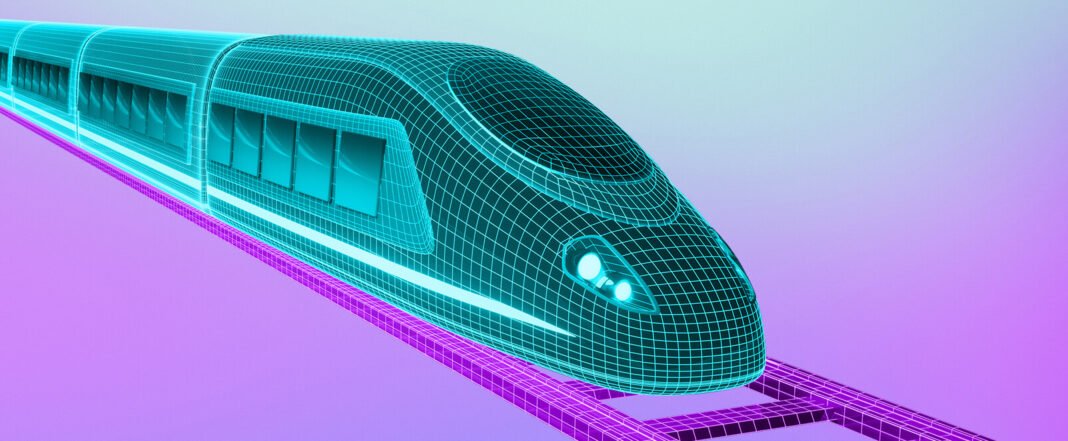As urban populations continue to grow, the demand for efficient and sustainable public transportation systems like light rail has become more acute. To meet this demand and ensure the reliability and safety of these transportation solutions, light rail manufacturers are increasingly turning to industrial automation. Among the various technologies enhancing these processes, servo controllers play a crucial role by ensuring the precision and efficiency required in modern light rail manufacturing. This article explores how industrial automation, particularly through the use of servo controllers, is transforming light rail manufacturing, making it more efficient and adaptable to the needs of contemporary urban transportation.
The Importance of Automation in Light Rail Manufacturing
Light rail systems are complex, requiring high standards of engineering precision to ensure safety, comfort, and longevity. The integration of industrial automation in light rail manufacturing provides numerous benefits:
- Enhanced Precision and Consistency
- Automated systems, driven by advanced technologies like servo controllers, deliver high precision in the fabrication and assembly of light rail components. This precision is crucial for ensuring the trains operate smoothly and safely under the stresses of daily use.
- Increased Production Efficiency
- Automation enables manufacturers to scale up production without compromising quality. Automated production lines can operate continuously, significantly boosting output and reducing the time it takes to deliver new trains to the market.
- Improved Quality Control
- Automated inspection and testing systems ensure each component and assembly meets stringent quality standards, which is vital for the safety and reliability of light rail systems.
- Cost Reduction
- While the initial investment in automation technology can be substantial, the long-term savings through reduced labor costs, decreased material waste, and lower error rates can be considerable.
Key Applications of Industrial Automation in Light Rail Manufacturing
- Component Machining and Fabrication
- The machining of critical light rail components such as wheels, axles, and chassis parts requires utmost accuracy, which can be achieved through CNC machines controlled by servo controllers. These controllers precisely adjust the machining tools to ensure that each part meets exact specifications.
- Assembly Line Automation
- Light rail vehicles consist of numerous complex assemblies that must be precisely aligned and integrated. Robots equipped with servo controllers perform tasks such as welding, bolting, and mounting of these assemblies, ensuring that all components are perfectly aligned and securely fastened.
- Painting and Finishing
- Automated painting systems use servo-controlled robots to apply coatings uniformly across the exterior of the light rail vehicles. These systems ensure consistent paint quality and thickness, which are crucial for both aesthetic appeal and long-term protection of the vehicles.
- Testing and Quality Assurance
- Before light rail vehicles can be deployed, they must undergo rigorous testing to ensure their safety and functionality. Automated testing rigs, controlled by servo controllers, simulate various operating conditions to test the durability and performance of the trains. This includes stress testing under simulated loads and weather conditions.
The Role of Servo Controllers in Enhancing Light Rail Manufacturing Automation
Servo controllers are integral to the automated systems used in light rail manufacturing. These devices manage the precise operation of servo motors that drive the majority of the automated machinery used in the industry. Here’s how they contribute:
- Precision Control: 3-100-7-FWServo controllers allow for exact movements and adjustments, which are crucial for tasks that require high precision, such as the alignment of rail car panels or the installation of intricate electrical systems.
- Flexibility: These controllers can be quickly reprogrammed to accommodate different types of rail cars or updated designs, providing the flexibility needed to meet custom specifications or new market demands.
- Efficiency: By optimizing the movement of assembly robots and machining equipment, servo controllers reduce production times and enhance energy efficiency.
Challenges in Automating Light Rail Manufacturing
Despite the advantages, the automation of light rail manufacturing faces several challenges:
- High Initial Investment
- The cost of setting up advanced automated production lines can be significant, requiring substantial capital investment from manufacturers.
- Integration Complexity
- Integrating sophisticated automation systems into existing manufacturing processes can be complex and disruptive, particularly if older equipment and systems are involved.
- Skilled Workforce
- There is a need for highly skilled technicians and engineers to operate, maintain, and troubleshoot advanced automated systems, necessitating significant investment in training and development.
Future Outlook
The future of light rail manufacturing will likely see an even greater integration of cutting-edge automation technologies. Advances in artificial intelligence, machine learning, and the Internet of Things (IoT) are expected to further enhance the capabilities of automated systems, enabling more adaptive and intelligent manufacturing processes. These innovations could lead to smarter production lines that adjust operations in real-time, further improving efficiency and product quality.
Conclusion
Industrial automation, especially the use of servo controllers, is playing a transformative role in light rail manufacturing. By enhancing precision, efficiency, and adaptability, automation helps manufacturers meet the growing demand for reliable and efficient urban transportation solutions. As technology continues to advance, embracing these innovations will be crucial for light rail manufacturers aiming to lead in the competitive and rapidly evolving transportation industry.
